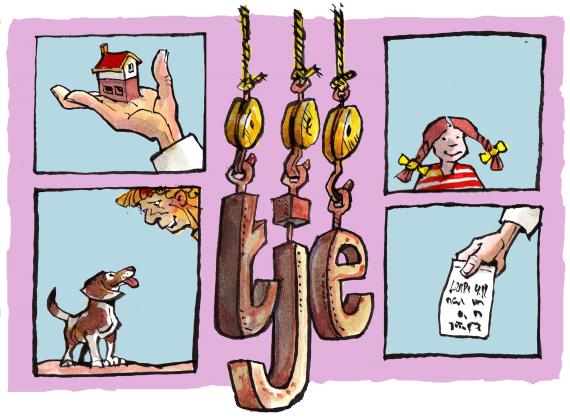illustration Henk van Ruitenbeek
Diminutives are extensions added to common words, to add a sense of smallness or cuteness to the meaning. While uncommon in English, these exist in many languages such as the Russian ‘-chk’ and ‘-ik’ or the Italian ‘-ino’, as in the word Cappuccino, which literally means ‘little hood’.
The Dutch diminutive ‘-tje’, however, can get pretty confusing. In my foreign mind, I instinctively translate the ‘-tje’ as something cute, a form of baby talk. In some contexts, this works fine: ‘huisje’ – a small or cute house, a ‘housey’. ‘Hondje’ – a small or cute dog, a ‘doggy’. But hearing students ask their professor ‘Mag ik een vraagje stellen?’, it sounds to me like ‘Can I ask a cute little, teeny tiny, question?’ Hardly an appropriate way to address a teacher.
I can’t help being amused at the supermarket checkout when I’m offered a bonnetje
I eventually learned that the Dutch diminutive is not always used for baby talk. It can be used to emphasize that a certain object is singular, or to give a new meaning to a word. ‘IJsje’, for instance, does not mean ‘little ice’, but rather an individual ice cream. ‘Meisje’ is not a cute maiden, simply a girl. Nevertheless, I can’t help being slightly amused whenever I am at the supermarket checkout and I’m offered a teeny tiny, cute little ‘bonnetje’.
David Katzin, PhD candidate in the Farm Technology group, from Israel
Do you have a nice anecdote about your experience going Dutch? Send it in! Describ an encounter with Dutch culture in detail and comment on it briefly. 300 words max. Send it to resource@wur.nl and earn twenty-five euros and Dutch candy.

